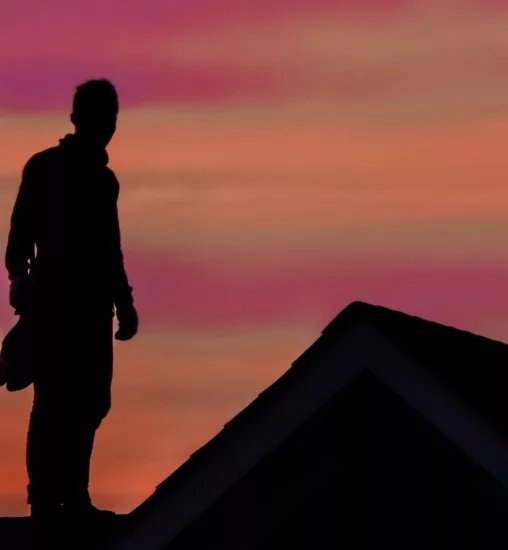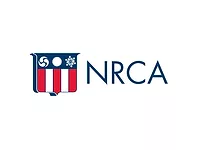NRCA Town Hall Reveals Impact of Supply Chain Issues and Election on Industry

Leaders in the roofing industry gave an optimistic outlook for third-quarter sales and production, but are worried how the pandemic, paired with supply chain issues and the election, will affect the future.
“What we’ve been hearing from residential contractors is that it’s been a real robust year, a lot of it has been driven by people not being able to go on vacations, they had extra money, people had stimulus dollars,” said Reid Ribble, CEO of the National Roofing Contractors Association (NRCA). “Other parts of the country we’re starting to see a slowdown in commercial roofing.”
This was the general consensus among a six-member panel representing various sectors of the industry that spoke during a Telephone Town Hall held by the NRCA on Oct. 13.
State of the Industry
Asphalt Roofing Manufacturers Association (ARMA) Vice President Reed Hitchcock said residential asphalt roofing materials have seen strong movement that coincides with increased demand from homeowners. He said shingle manufacturers reporting to ARMA are running at full capacity.
He cautioned, though, that a shortage of ancillary products related to steep-slope roofing like plywood is causing delays in jobs. He added that the recent barrage of storms in the south and southeast compound the issue, and speculated that lead times will improve in the next four to six weeks.
“I wish I had the crystal ball on this one,” said Hitchcock. “In talking to our members, there is some anticipated demand slowdown coming with the fourth quarter and the first quarter coming up.”
This matches up with the results of polling questions the NRCA posed to the town hall’s nearly 2,000 participants. When asked to compare the number of contracts completed in the third quarter to the second quarter, a total of 38% saw an increase of at least 5%, while another 38% said they completed the same number. Of the 24% that said they completed fewer contracts, around 7% said they completed at least 25% fewer jobs.
Sectors like EPDM and coatings have been weathering 2020 better than others. Ellen Thorp, executive director of the EPDM Roofing Association, said they have “ample supplies” and that there haven’t been any major concerns aside from what the fourth quarter may hold.
Meanwhile, Roof Coatings Manufacturers Association Executive Director Dan Quinonez said the inability to travel safely has hindered the ability to check material sources and jobsites, but factories that create coatings are producing them at all-time highs.
“There’s an opportunity to see an increase in use,” he said. “We always find that the coatings actually can extend the life of the roof, and I think that because of COVID — financial costs on the residential and commercial side — I think owners are looking at more opportunities to save long term.”
In a polling question that asked to compare third quarter reroofing requests to the second quarter, 31% said requests have gone up by 5% to 25%, and 16% said they had more than a 25% increase. A total of 30% said requests have remained the same, while 24% said they’ve experienced decreases. Of them, 7% saw a decrease of more than 25%.
Single ply roofing, on the other hand, took a hit during the pandemic, said Single Ply Roofing Industry President Mike Hubbard. Like other roofing sectors, supply chain issues are causing scheduling problems and delays.
“We did see a soft second quarter, and the third quarter we did see a bit of a recovery, but again, it’s all what’s going to happen in the fourth quarter,” he said.
When asked how contractors can deal with workforce shortages, Thorp suggested contractors visit the National Women in Roofing (NWIR) website for resources that can help them bring more women into their companies.
“We’ve done webinars in the past about addressing the labor shortage and also about how to recruit and retain women to work on the roof and in the field,” said Thorp, who serves as the NWIR executive director. “It might encourage you to think about some things in a different way than you have in the past, and will surely result in you getting some awesome women to work on your roofs and in the office.”
Election Issues
On top of an above-average storm season and the pandemic, the country is experiencing a presidential election year that is arguably more divisive than others in recent history.
Quinonez said he expects the November election to impact the types of stimulus packages that the federal government will provide, depending on which political party holds the majority.
“From what we can tell on what is currently going on, I’m not sure that a Republican Senate has an appetite for a very large COVID relief package,” he said. “I do think if there’s a Democratic landslide, I do think there’s going to be a sense of urgency to get the economy revved up again.”
In light of the conflicts taking place in D.C., International Institute of Building Enclosure Consultants CEO Brian Pallasch said roofing contractors shouldn’t anticipate the passing of the federal legal liability shield in 2020. If passed, the measure would provide protections to businesses for COVID-19 exposure claims.
“I would’ve felt more comfortable about this a couple weeks ago, but clearly there has been difficulties reaching any sort of deal, and we can see the back and forth match that’s been going on in Washington, D.C.,” Pallasch said.
When it comes to roofers directly affecting policies, Ribble said the NRCA is planning on holding is annual Roofing Day in March 2021, where roofing professionals travel en masse to Washington, D.C. to talk with their representatives. However, this is tentative since it is unknown how safe it will be to travel and meet in large groups at that time.
Polyisocyanurate Insulation Manufacturers Association President Justin Koscher said the election is definitely going to shake up how any conversations are held with congressional representatives during Roofing Day, affecting everything from immigration reform to workforce development.
“Our audience could be very, very different next March, and coming at those issues in ways that resonate with who controls both Capitol Hill and the White House," Koscher said.
Regardless of Roofing Day's status, Ribble said one of the most important things roofing contractors can do to make their voices heard is to vote in the November election.
“This is our chance for the American citizens to hold some power over the legislators and over the White House,” he said. “It’s the one day they’re all nervous about what’s going to happen, and it’s the one day where the voters have all the power.”
Looking for a reprint of this article?
From high-res PDFs to custom plaques, order your copy today!






